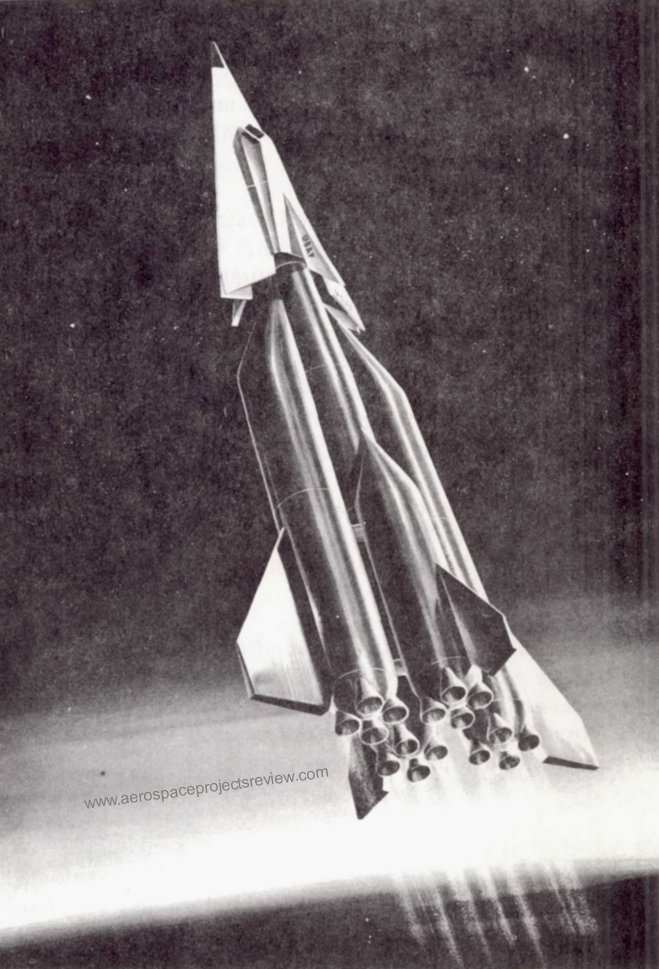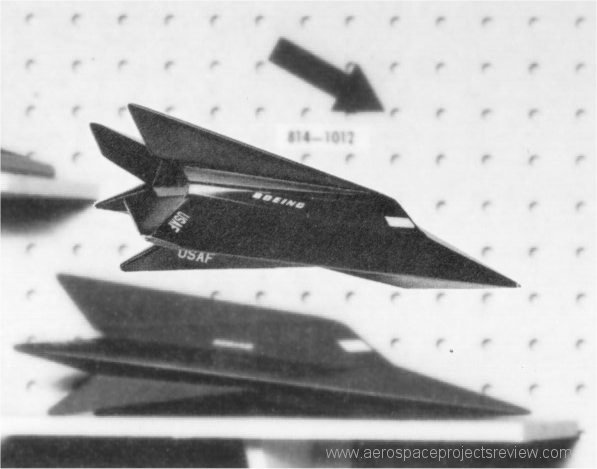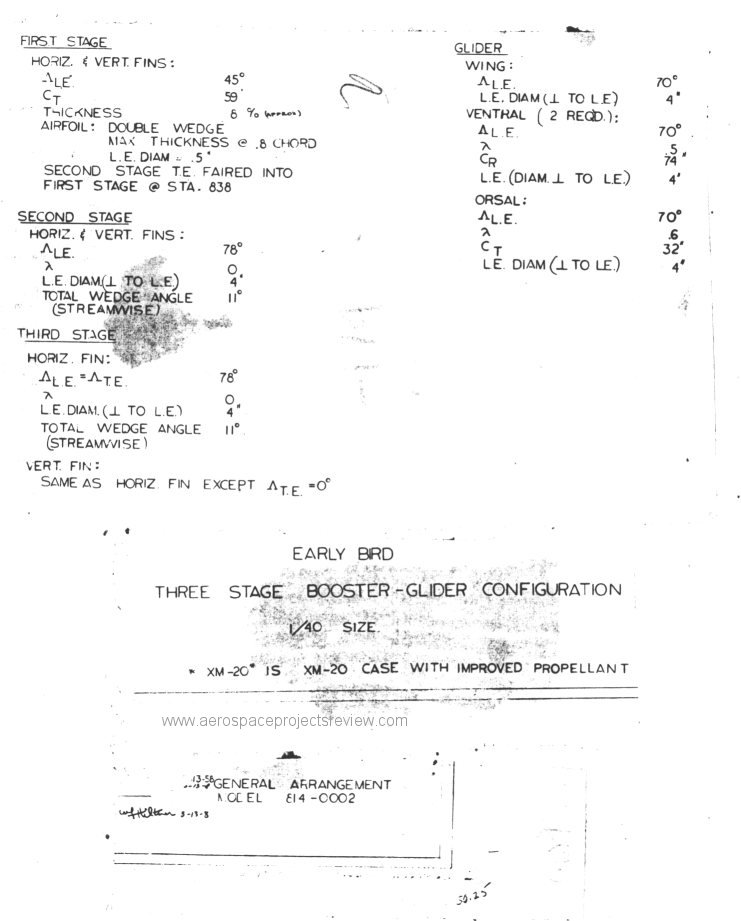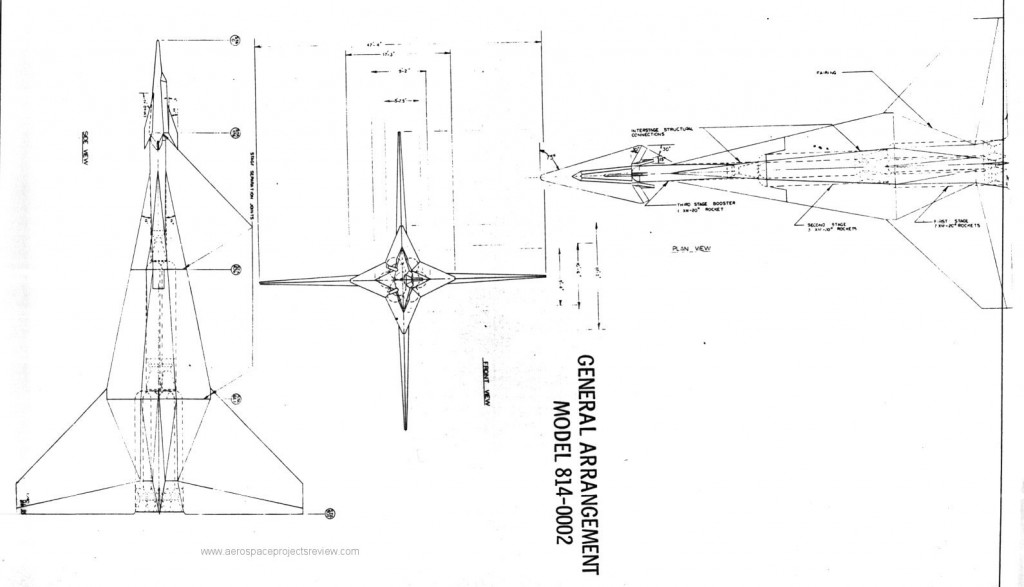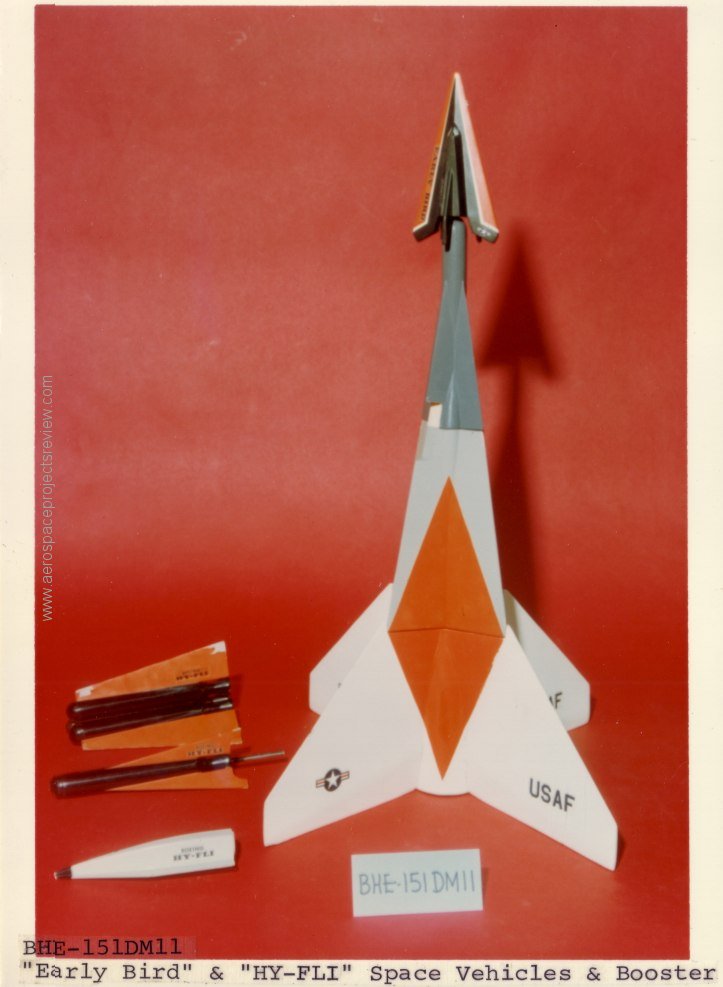Boeings initial concept for the Dyna Soar – meant to be an actual orbital bomber – bore almost no relationship to the final X-20 Dyna Soar. All sharp edges and fins like a 57 Cadillac, it wound up looking almost nothing like the Dyna Soar that almost got built. Irritatingly for Bell Aerospace, the final Dyna Soar design looked a *lot* like the Bell entry. The winning Boeing entry was just very, very wrong. The baseline launch vehicle for it, for instance, was a kludged-together monstrosity composed of Minuteman ICBM stages clustered together. Of course, Minuteman had the advantage of being a Boeing product, so there ya go.
Another oddity about the Boeing design is that even though it won, and you can get some pretty detailed drawings and wind tunnel reports and whatnot about many of the competing designs… the Boeing design is rarely depicted with much more detail than a bare three-view. It’s like they phoned it in, not expecting to win… and they won anyway.
The basic design of the initial Model 814 Dyna Soar was tinkered with repeatedly until it eventually turned into the well-known Dyna Soar (as shown in the Aerospace Projects Review Blog header image). One such early configuration is the Model 814-1012 is shown in model form here:
While the initial baseline launch vehicle was proposed to be a cluster of Minuteman stages with sizable fins to maintain aerodynamic stability, alternative designs were of course put forward. One such design is shown in these drawings of the Model 814-0002 launch vehicle + Dyna Soar. This design, from 3-13-1958, features a three-stage booster composed of clusters of XM-20 “Sergeant” rocket motors… seven on the first stage, three on the second, a single rocket on the third… and the biggest damned fins EVAR. Note that the concept is named “Early Bird.” Note that “Early Bird” was also a name for Intelsat 1, the first communications satellite. In the case of the Boeing Model 814-0002, Early Bird likely referred to the supposed ability of a cluster of Sergeant motors to be slapped together and made to fly quickly, sooner than a dedicated launch vehicle.
Portions of this were originally posted HERE, HERE, HERE and HERE.
